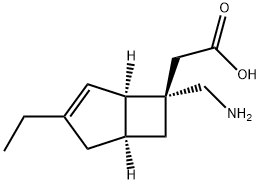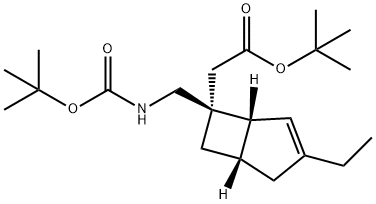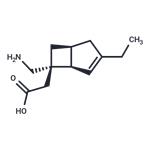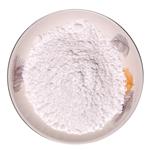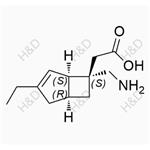Description
Mirogabalin is a calcium channel blocker with analgesic effects. It binds to the α
2δ-1 and α
2δ-2 subunits of voltage-dependent Ca
2+ channels. Mirogabalin has potent and sustained analgesic effects (ED
50 = 2.5 mg/kg) in rats with diabetes induced by streptozotocin (STZ; ). Mirogabalin does not inhibit activities associated with CNS adverse effects of analgesics, such as rotarod performance (ID
50 = 9.4 mg/kg) or locomotor activity (ID
50 = 43.9 mg/kg), at its effective dose. Formulations containing mirogabalin are in clinical trials for diabetic peripheral neuropathic pain.
Uses
Mirogabalin is a two alpha2delta ligand which is investigated for the treatment of peripheral neuropathic pain, postherpetic neuralgia and fibromyalgia, showing promising results in patients with diabetic peripheral neuropathy.
brand name
Mirogabalin (brand name Tarlige; developmental code name DS-5565) is a gabapentinoid medication developed by Daiichi Sankyo.
Side effects
The most typical clinical adverse reactions of mirogabalin were dizziness (7.6%) and somnolence (5.1%). However, the occurrence rate was lower than with pregabalin, whose adverse effects were reported to include somnolence, balance disorder, fatigue, and peripheral edema, with an occurrence rate of 8.0%, 4.0%, 4.0%, and 4.0%, respectively[1].
Mode of action
Mirogabalin is an analog of the neurotransmitter, gamma-aminobutyric acid (GABA). It is a potent and specific ligand of the α2δ subunit of voltage-dependent Ca2+channels, which reduces calcium (Ca2+) influx and neurotransmission in dorsal root ganglia (DRGs), inhibiting neurotransmitter release in presynaptic neuron endings.
References
[1] Hui Tang. “The Clinical Application and Progress of Mirogabalin on Neuropathic Pain as a Novel Selective Gabapentinoids.” Mediators of Inflammation 2023 (2023): 4893436.
